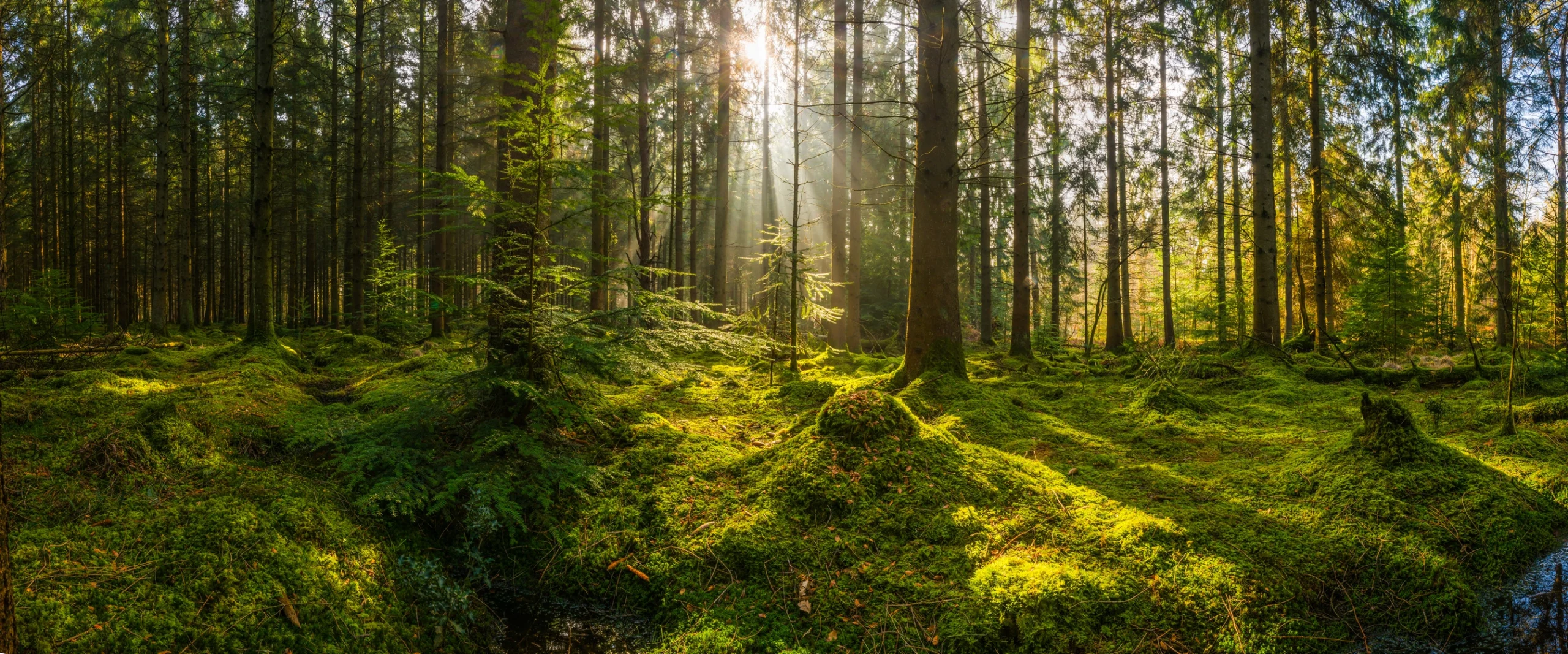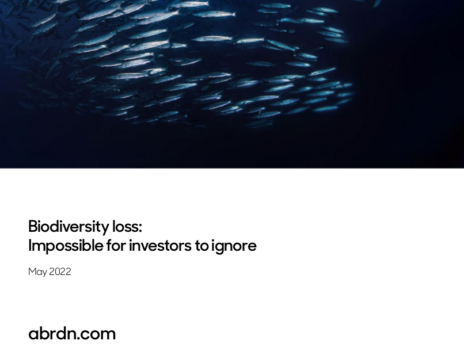

The World Economic Forum estimates that more than half of the world’s total GDP is moderately or highly dependent on nature and its services. But, while the global economy may run on natural capital, at our current rate of demand we would require 1.75 Earths to sustainably cover our usage.
Such ‘natural capital debt’ is a growing concern, with both serious implications for financial markets and the planet itself. While biodiversity is becoming an increasingly hot topic, reporting standards and legislation remain at a point where making the issue a central pillar of one’s sustainable investment strategy in a consistent, transparent way remains a challenge.
According to Ann Meoni, a senior analyst within abrdn’s Investment Sustainability Group, while it is certainly positive to see natural capital moving up the investor agenda, there remain inconsistencies and a lack of awareness surrounding how best to approach the issue. A consideration of biodiversity should not only take impacts of economic activity into account, but also the dependencies businesses have on nature itself.
“Historical undervaluation of ecosystem services is an example of market failure,” says Meoni. “This leaves industries unprepared for the diminishing availability of natural capital we extract from our ecosystems. Reductions in water availability and lower soil fertility are prime examples – the latter is further impacted by climbing chemical fertiliser prices.
“This all has a negative effect on business productivity and costs, especially for primary industry, although there are obviously impacts on the supply chain as a whole.”
How are biodiversity and climate change interlinked?
Climate change is a significant and growing driver of biodiversity loss. Meoni points to the recent examples of drought and forest fires in Europe, which have arisen from a failure to deal with the climate crisis. The loss of forests is a huge issue. Trees provide a ‘carbon sink’, but when they burn all of that absorbed carbon is then emitted back into the atmosphere.
“So now we’re dealing with multiple disasters at once,” Meoni says. “Loss of animal habitat, loss of plant life, loss of timber resources, damage to soil and air quality. It becomes a cycle, with biodiversity loss and climate change at the centre. Sadly, the more loss we face, the harder it becomes for ecosystems to recover. The ‘diversity’ in biodiversity is key to resilience.
“Of course, there is a positive play here too since ecosystems can absorb carbon as well as emit it. We just need to think about cleverer ways of making those ecosystems part of the solution.”
To a limited extent, the undervaluation of natural resources is being addressed through the carbon credit market, via growth in nature-based solutions. “Nature-based solutions involve the restoration of ecosystems, like forests or mangrove swamps, which can absorb carbon,” Meoni explains. “When done well, this approach addresses the twin crisis of climate and biodiversity. It also enables companies to meet carbon-neural or net-zero obligations, and enhance their reputation with customers and wider stakeholders, including regulators”
To highlight the scale of the problem, it is worth mentioning that industries that rely on palm oil, beef and soy are responsible for around 70% of the 10 million hectares of natural habitat lost to deforestation every year around the world. It is a paradox, Meoni says, which needs to be tackled head-on, a result of corporate strategy focusing more on short-term profit gain than long-term resource (and ultimately profit) depletion.
“We’re depleting the natural capital on which our economies rely,” Meoni says. “That’s an important consideration for investors because the businesses we invest in, at some stage in the supply chain, all have dependencies on those same resources.
“The flip side is that there are opportunities for companies that can provide solutions to the issue or that are managing their natural capital use well. An awakening at a global and a national level to these issues is driving policy and regulation. Changing consumer preferences are also altering demand for products – we’re seeing strong growth in the meat alternatives market, for example.”
What is the TNFD?
One big challenge has been defining what exactly should be measured and reported. The Taskforce on Nature-related Financial Disclosures (TNFD) is committed to providing a framework that will help companies and investors properly address that issue. Just as the Task Force on Climate-related Financial Disclosures (TCFD), launched in 2015, catalysed the carbon markets, the hope is that the TNFD can do something similar for biodiversity markets, improving disclosures and driving the adoption of biodiversity offsets.
According to Meoni, a coherent framework is essential – and abrdn’s position on the TNFD observer group is a clear indication that this belief is held across the wider group. The challenge for failing to have something in place already, of course, is the current discrepancy in biodiversity data.
There isn’t a single agreed-upon metric that can be applied to natural capital in the way that CO2 has been used for climate change – in truth, there might not be one. This, Meoni says, is because dependences and impacts are location-specific. Ecosystems can vary significantly depending on the place, so while the dependencies for the activity will be similar, the ability of the location to meet those demands will vary. Impacts will also vary in significance depending on the integrity of the ecosystems at the location. All these complications make comparative data on this issue difficult.
“A standard reporting framework hasn’t yet been widely adopted when it comes to nature disclosure, though that is the hope for the TNFD,” Meoni acknowledges. “Some front-running companies are reporting a lot of detail on the impacts and dependencies on nature, but because there isn’t a clear framework it’s often not comparable data. The methodologies can be different or, quite simply, the data itself is different.
“So as an investor, we really need something that we can compare across the board. While we do have some metrics around natural capital, we often don’t have good data coverage and we certainly don’t have a single agreed-upon metric.”
The role of regulators in natural capital
Though regulation in a lot of industry sectors does not tend to move quickly, a number of governing bodies have been keen to get ahead of the issue of biodiversity loss. While this is a good thing, according to Meoni, it does mean that investors need to move quickly if they want to keep up with the rate of change.
“The EU is pioneering regulation around natural capital,” Meoni says. “With the EU Taxonomy and Sustainable Finance Disclosure Regulation (SFDR), as well as the proposed EU regulation on deforestation-free products [legislation that aims to stop goods coming into the EU market if they are linked to deforestation, forest degradation, or violated producer country laws], this type of regulation is likely to become more widespread.
“What’s interesting about the deforestation-free proposed regulation is that it doesn’t just focus on how deforestation is managed within the EU; it looks at any input coming into the EU. It recognises that biodiversity loss is a supply chain issue, as well as a domestic one. The influence this legislation has goes beyond EU borders and is all about using market influence.”







